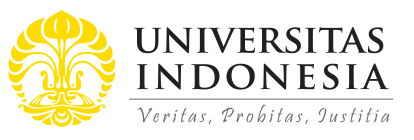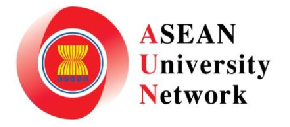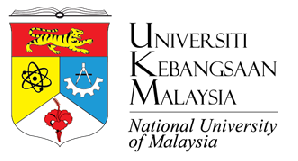
Abstract
The ability of adolescents to cope with stressful life events has notbeen well developed. Facing stressfulsituations might trigger them to engage in many dangerous and self-destructivebehaviors. Life skills program in improving mental health of adolescents has been proven in many countries, as it has in Indonesia. In post-disaster situation, there is rarelyany community program which focuses on adolescent mental health. Life skillsprogram is a psychological intervention to teach adolescents to improve theirskill to cope with stress, develop self-esteem, deal with peer pressure, thinkcritically, communicate appropriately and act assertively. Teachers and localhealth professionals who have already been trained about life skills programapply this program in adolescents experiencing a stressful event, a naturaldisaster from the eruption of Mount Merapi in Yogyakarta-Indonesia. This studyattempts to apply and evaluate the effectiveness of the program for adolescentswho had survived a natural disaster in Yogyakarta-Indonesia. Three-weeks lifeskills training was conducted in 2012 on 40 junior and senior high schoolstudents, post Mount Merapi eruption in Yogyakarta and Magelang. Subjects wereassessed for their self-image using Rosenberg self-image questionnaire, andtheir emotional-behavioral problems and mental strength using Strength andDifficulties Questionnaire (SDQ), before and after the training. SPSS was usedfor the statistical analysis. The average age of the subjects was 14.48 +1.21 years old. There were significant differences on the self-esteem andmental strength aspects of the subjects before and after intervention. Score onlow self-esteem was improved (p=0.005), negative self perception also becamebetter (p<0.001), and prosocial behavior was increased (p=0.001). There werealso decreasing difficulties and emotional-behavioral problem score afterintervention, and other aspects of self-esteem such as instability andself-consciousness. Life skills training has several positive effects inimproving mental strength and self-image and decreasing emotional andbehavioral problems of adolescents post-disaster.
References
Ang E.A. (2007). Karakteristik Gangguan Mental pada Pelajar Sekolah Menengah Pertama di Wilayah Jakarta Pusat. Thesis. Faculty of Medicine Universitas Indonesia, Jakarta, Indone-sia. Anonymous. (2002). Lifeskills Training Effective for Adolescent Drug Prevention.Journal of Psychosocial Nursing & Mental Health Services, 40(12), 12. Badan Nasional Penanggulangan Bencana (BNPB). (2009). Kajian tentang Penanggulangan Bencana Alam di Indonesia: Laporan Akhir. Retrieved from http://open_jicare-port.jica.go.jp/pdf/11928892.pdf. Bastaman TK (1982). Citra Diri Remaja di Panti Asuhan. Jakarta: Department of Psychiatry Faculty of Medicine Universitas Indonesia. Thesis. Benveniste, D. (2006). Crisis intervention after major disasters. Carter-Jenkins Website. Re-trieved from http://www.thecjc.org/pdf/benveniste_crisis.pdf. Bolton, P., et al. (2007). Interventions for depression symptoms among adolescent survivors of war and displacement in northern Uganda: a randomized controlled trial. Jama, 298(5), 519-527. Botvin G.J., Schinke S.P., Epsten J.A., Diaz T. (1994). Effectiveness of Culturally-focused and Generic Skills Training Approach to Alcohol and Drug Abuse among Minority Youths. Psychology of Addictive Behavior, 8, 116-127. Botvin G.J., Schinke S.P., Epsten J.A., Diaz T. (1995). Effectiveness of Culturally-focused and Generic Skills Training Approach to Alcohol and Drug Abuse among Minority Youths: Two-Year Follow-Up Result. Psychology of Addictive Behavior, 9, 183-194. Departemen Kesehatan RI Direktorat Bina Kesehatan Masyarakat. (2004). Materi Pelayanan Kesehatan Peduli Remaja. Jakarta: Depkes RI. Departemen Kesehatan RI Direktorat Bina Pelayanan Kesehatan Jiwa. (2006). Modul Pelatihan Meningkatkan Kesehatan Jiwa Remaja di Sekolah Melalui Pendidikan Kecakapan Hidup (Life Skills Education). Jakarta: Depkes RI. Fullerton C.S., Ursano R.J. (2005). Psychological and Psychopathological Consequences of Disasters. In: Lopez-Ibor JJ, Christodoulou G, Maj M, Sartorius N, & Okasha A (Eds), Disas-ters and Mental Health (pp. 13-36). England: John Wiley & Sons Ltd. Garnefski, N., Legerstee, J., Kraaij, V., van den Kommer, T., & Teerds, J. (2002). Cognitive cop-ing strategies and symptoms of depression and anxiety: A comparison between adoles-cents and adults. Journal of Adolescence, 25, 603–611. Gómez-Beneyto, M., et al. (2013). Psychometric behaviour of the strengths and difficulties questionnaire (SDQ) in the Spanish national health survey 2006. BMC psychiatry, 13(1), 95. Goodman, R. (1997) The Strengths and Difficulties Questionnaire: A research note. Journal of Child Psychology and Psychiatry, 38, 581-586. Goodman, R. (2001). Psychometric properties of the strengths and difficulties questionnaire. Journal of the American Academy of Child & Adolescent Psychiatry, 40(11), 1337-1345. He, J. P., Burstein, M., Schmitz, A., & Merikangas, K. R. (2013). The Strengths and Difficulties Questionnaire (SDQ): the factor structure and scale validation in US adolescents. Journal of abnormal child psychology, 41(4), 583-595. Jordans, M. J., Komproe, I. H., Tol, W. A., Kohrt, B. A., Luitel, N. P., Macy, R. D., & De Jong, J. T. (2010). Evaluation of a classroom‐based psychosocial intervention in conflict‐affected Ne-pal: a cluster randomized controlled trial. Journal of Child Psychology and Psychiatry, 51(7), 818-826. Kaligis F., Widyawati I.,Wiguna T. (2008). EfektivitasPelatihanKecakapanHidupdalam-MempengaruhiKekuatan, Kesulitandan Citra DiriRemaja. Thesis. Faculty of Medicine Universitas Indonesia, Jakarta, Indonesia. Kaligis F., Wiguna T., Widyawati I. (2009). Efektivitas Pelatihan Kecakapan Hidup terhadap Citra Diri Remaja. Majalah Kedokteran Indonesia I (Journal of the Indonesian Medical Association), 59(3), 100-106. Liu, S. K., Chien, Y. L., Shang, C. Y., Lin, C. H., Liu, Y. C., & Gau, S. S. F. (2013). Psychometric properties of the Chinese version of Strength and Difficulties Questionnaire. Comprehen-sive psychiatry, 54(6), 720-730. Mayou, R. A., Ehlers, A., & Hobbs, M. (2000). Psychological debriefing for road traffic accident victims. The British Journal of Psychiatry, 176(6), 589-593. Moya C. (2011). Life Skills Approaches to Improve Young Adult Reproductive Health. Re-trieved from http://www.unicef.org. National Health Promotion Associates. (2011). Life Skills Training Resource Fact Sheet. Re-trieved from: http://www.lifeskillstraining.com/resource_fact.php. Pataki, C S. (2005). Normal Adolescence. In: Sadock BJ &Sadock VA (Eds.), Kaplan &Sadock’s Comprehensive textbook of psychiatry (pp. 3035-43). (8th Ed.). Philadelphia: Lip-pincott Williams & Wilkins. Pfefferbaum B, Noffsinger M.A., Wind L.H., Allen J.R. (2014). Children’s coping in the context of disaster and terrorism.J Loss Trauma, 9(1), 78–97. Pusat Kajian Bencana dan Tindak Kekerasan Departemen Psikiatri FKUI-RSCM. (2005). Pe-natalaksanaan Berbagai Gangguan Psikiatrik akibat Peristiwa Traumatik. Quayle D, Dziurawiec S, Roberts C, Kane R, Ebsworthy G. (2001). The Effect of an Optimism and Lifeskills Program on Depressive Symptoms in Preadolescence.Behavior Change, 18(4), 194-203. Reijneveld, S. A., Crone, M. R., Schuller, A. A., Verhulst, F. C., &Verloove-Vanhorick, S. P. (2005). The changing impact of a severe disaster on the mental health and substance misuse of adolescents: follow-up of a controlled study. Psychological medicine, 35(3), 367. Reijneveld, S. A., Crone, M. R., Verhulst, F. C., &Verloove-Vanhorick, S. P. (2003). The effect of a severe disaster on the mental health of adolescents: a controlled study. The Lancet, 362(9385), 691-696. Ruddy, R. and House, A. (2005) Psychosocial interventions for conversion disorder. Cochrane Database of Systematic Reviews, 4. Art. No.: CD005331. Ruzek, J. I., et al. (2008). Cognitive-behavioral psychology: Implications for disaster and ter-rorism response. Prehospital and disaster medicine, 23(05), 397-410. Steinberg L. (1999). Adolescent Development in Context. In: Steinberg L, Adolescence. (pp. 4-11). (5th Ed.). Boston: McGraw-Hill College. Tiendrebeogo G, Meijer S, Engelberg G. (2003). Life Skills and HIV Education Curricula in Africa: Methods and Evaluation. Africa: Office of Sustainable Development Bureau for Africa. Unicef. (2011). Life Skills-Based Education. Retrieved from http://www.unicef.org/lifes-kills/. Ursano, R. J., Bell, C., Eth, S., Friedman, M., Norwood, A., Pfefferbaum, B., ... & Charles, S. C. (2004). Practice guideline for the treatment of patients with acute stress disorder and posttraumatic stress disorder. Am J Psychiatry, 161(11 Suppl), 3-31. WHO. (2011). Mental Health: Strengthening Mental Health Promotion. Retrieved from http://www.who.int/mediacentre/factsheet/fs220/en/. Wikipedia. (2017). 2010 eruptions of Mount Merapi. Retrieved from https://en.wikipe-dia.org/wiki/2010_eruptions_of_Mount_Merapi. Youthinmind Ltd. (2015). Assessment Name: Strengths and Difficulties Questionnaire (SDQ). Retrieved from: http://ebi.missouri.edu/wp-content/uploads/2015/10/SDQ-Brief.pdf Zollinger T.W., etal. (2003). Impact of the Life Skills Training Curriculum on Middle School Students Tobacco Use in Marion County, Indiana, 1997-2000.Journal of School Health, 73, 338-346.
Recommended Citation
Kaligis, Fransiska; SW, Noorhana; Diatri, Hervita; and Dharmono, Suryo
(2017).
Life skills program for improving adolescent mental health in the aftermath Mount Merapi eruption, Yogyakarta-Indonesia.
ASEAN Journal of Community Engagement, 1(1).
Available at: https://doi.org/10.7454/ajce.v1i1.61







